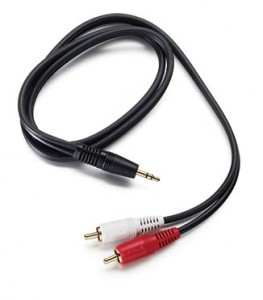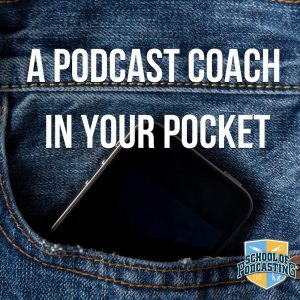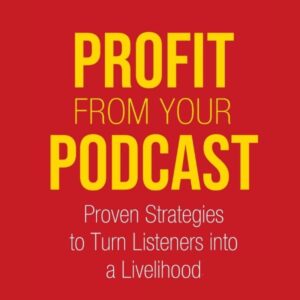
There are many podcast consultants like myself we give advice for want-to-be podcasters. Most of the time there are answers that are fairly universal, but I feel there are times when the answers differ greatly. One such answer is recording a skype call. The answer I often hear is to set up a “mix minus” set up on your mixer. While this works, it (in my opinion) makes the process much harder than it has to be.
Why do people use this method? Often this is done by people who are recording their podcast “live” (meaning they mix in their intro/outro music and sound effects as they record their voice). The issue is they want the person they have called on Skype to hear the music and sound effects as well. This problem is solved by having any sound effects saved to another device (say an mp3 player, or burned to a CD) and those devices are run into the mixer. You have an instant volume control of the music and sounds with whatever device you are using.
 My method involves taking a cord and plugging it into your headphone jack. Then plug the other end into a device you are using the record. This could be another computer or a portable recorder such as the Zoom H6, H2, or the new Zoom H1. However, with the cord plugged into your headphone jack, you can't hear the person you have called. The solution? Since the sound is going into the recording device, plug the headphones into the recording device.
My method involves taking a cord and plugging it into your headphone jack. Then plug the other end into a device you are using the record. This could be another computer or a portable recorder such as the Zoom H6, H2, or the new Zoom H1. However, with the cord plugged into your headphone jack, you can't hear the person you have called. The solution? Since the sound is going into the recording device, plug the headphones into the recording device.
All you have to do now is check the recording levels, and whatever you hear in your headphones – is what you are recording. You can adjust the volume of the person you called (for example if you called someone on an actual phone), in skype (see video to see how to do this).
I would recommend that if you are doing an interview, forget about recording live and focus on the interview. Capture it, and then later add your intro and outro. I will add my two cents about podcasting live (including a live chat) in the future as well.
For today, I wanted to let you know there is an EASY way to record a skype call that doesn't require diagrams, or an extra set of hands to pull off.
If you do not have another recording device, I've used free skype podcast recorder software in the past. It works, but I never trust it 100% (I trust it 98%).
If you'd like to start a podcast, and want to learn how the easy way to start a podcast, I encourage you to join the school of podcasting today. I look forward to working with you.





Whoa! Congrats on the new video format! Look out Paul Colligan, Gideon Shalwick and Dave Kaminski et al!!!
Will you be giving video tips? I hope so!
Gene
But how do you get *your* voice into the recording device? Using Skype, for example, the other person’s voice indeed goes straight into the recording device, which can be heard from the recording device’s headphone jack. But your voice does not travel out of the PC’s speakers by default setup. How is this done?
Your microphone is going into computer via (in my case) the line in on the computer from my mixer. I can hear myself through the line in, and I can adjust my volume going in (so I have control over the volume to make sure my volume is the same as my guest).
“Your microphone is going into computer via (in my case) the line in on the computer from my mixer.”
Respectfully, that is a terribly confusing setence.
The issue is: How is it possible to monitor your own voice when your mic is going into the PC’s Line In? The PC’s speaker output will NOT transmit its own Line In activity – at least by default. There must be a special sound card set up for that. I’ve read some articles explaining that there is something called “Stereo Mix” on Vista and 7 which, if enabled, will get the desired result. But I don’t have this option for some reason. At any rate, the salient issue is the one assumed in your article. Using an aux cable from the PC’s headphones to the Recorder’s Line In is fine and dandy *if and only if* your mic voice received by the PC’s Line In travels out the PC’s headphone jack. It does not.
Josh,
Mic goes into mixer. Mixer via RCA to 1/8″ cable goes into Line in of sound card.
1/8″ cable goes into headphone jack of computer. Other end has 1/8″ jack goes into line in of portable recording device.
Headphones go into headphone jack of recorder. I must press record to hear. I do hear my voice. I hear my callers voice.
Check your windows mixer settings and make sure the volume is up.
Thanks, Just what I was looking for. So helpful as always!
Do you have aany video oof that? I’d care to find out more details.
Great information thanks. Would I be able to us USB mic plugged into computer with a line out to the Zoom H1, and headphones coming out of Zoom H1 and be able to record and hear all the voices?
Yes Steve, the recorder doesn’t make much of a difference as long as it has the line in jack to go from the 2100.
Hey, this is a great tip! I am trying it out using a Zoom H4N, and while I can hear the Skype call OK — it is recording — there’s also a lot of “hiss” on the line. Any idea what’s going on there? There are options to supply plug-in power to the line coming from the computer, but the hiss is there whether or not I select that setting. Any ideas?
There are two sides to audio. THink of a glass. If its full, no air in the glass. If its half empty, it half water and half air. With audio a great recording has no hiss. The volume is almost up to zero (I know up to zero is weird). When you record, the lower the volume, the more hiss is in your file. So the firs thing to check is your recording volume.
So I tried your method. I have a MB Pro 2011 with the in and out ports. A jackie 802 vlz4 mixer. An EV Re20. I tried from the tape out on the mixer connecting the RCA cable to the line in on the computer. Then the headphones out 1/8 to the input 1 and 2 of the Zoom H5. I plugged in my actual headphones into the Zoom H5 to listen. The audio from Skype can be heard and recorded but my mic does not get picked up at all. Suggestions? This was the same issue before when I tried the mix minus method set up. The Zoom H5 was picking up any readings with the standard mix minus set up.
Vincent, might be quickest to schedule a coaching session (15 minutes) and we can troubleshoot together. http://www.schoolofpodcasting.com/schedule if we don’t fix it, you don’t pay. -Dave
PODCAST HELP NEEDED
MY PROBLEM:
I’m using a…
* Behringer Xenix Q1202USB mixer
* MacBook Pro
* Blue Yeti Pro mic (XLR cable to mixer)
* Headphones
I’m trying to record a SKYPE audio only interview w/ECAMM.
I can hear the SKYPE test call clearly, but I can NOT hear myself in my headphones. However, I CAN hear my voice in the playback…just NOT in my headphones during the “conversation.”
I’m really new at this. Where am I going wrong?
WHAT I’VE TRIED
Settings (Mac): Input/Output are both set to “USB AUDIO CODEC”
Audio MIDI Setup (Mac): Input/Output are both “USB Audio CODEC”
– 0 in/2 out on the OUTPUT, and 2 in/0 out on the INPUT
Again, the problem I’m having is that I can’t hear myself during the phone call in my headphones. Please help! Thanks so much!
Jamie,
See https://youtu.be/QHly7Vu2w-k -Dave
Hey Dave, I am a complete idiot…
Here is what I have…
I have a Zoom H5!
Logitech USB head phones with mic.
And I am trying to record both sides of a conversation for a podcast. What more do I need? I am going nuts here..
Josh,
Your kind of screwed with the headset as there is now way to get the audio of both of you into the recorder. You would have to use software like Callburner, Free Skype Recorder, etc. I would recommend going to http://www.bestpodcasinggear.com and getting an ATr2100, or a Samson Q2U microphone. They sound better, are more flexible, and will allow you to do what is in the video.
This was soooooo helpful! Thank you!